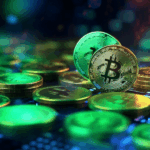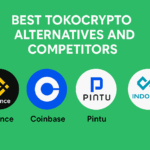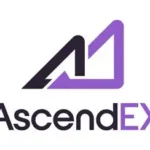In this article, I will discuss the Curve Finance, a decentralized exchange (DEX) designed specifically for stable coin trading.
Curve is known for its effective trading platform for numerous assets due to its low-slippage swaps and minimal fees.
I’ll dive deeper into how Curve works, its salient features, and its prominence amongst other protocols in the decentralized finance (DeFi) industry.
What Is Curve Finance?
Curve Finance is an Automated Market Maker (AMM) that utilizes an Automated Market Maker (AMM) model facilitating efficient exchange of stablecoins.
It provides minimum fee charges and low-slippage swaps for smooth trading which is what makes it suitable for USDT, USDC, DAI, and other assets of the same kind.

Users earn rewards by providing liquidity through fees and the native CRV tokens.
Curve’s catering for stablecoins, its capital efficiency, and its focus on reduced impermanent loss have established it as a primary DeFi service provider, all while maintaining a positive user experience and lowering cost during trading activities.
How Curve Finance Works

Automated Market Maker (AMM)
Just like any other AMM, Curve Finance uses an internal liquidity pool that allows users to swap tokens outside of an order book. These pools are smart contracts that bundle user deposits, allowing users to instantaneously swap tokens.
Liquidity Pools
Users can earn CRV tokens by providing liquidity on Curve through stablecoins or other pegged assets. In addition, users earn a fraction of trading fees for contributing to liquidity.
StableSwap Algorithm
The algorithm that Curve developed, known as the StableSwap algorithm, is the most effective for trading without slippage and maximizing profit. The algorithm controls the price of the assets in the pool and alters it based on the current supply and demand for assets in the pool.
Governance
In Curve, all decisions are made by the community, primarily the users that hold the CRV token. Users can lock their CRV tokens to receive veCRV which allows them to vote on many elements like how the protocol allocates funds, rewards, what upgrades the protocol should adopt, and more.
Cross-Chain Integration
Users can provide liquidity and trade on Ethereum and a lot of other EVM-compatible chains due to Curve supporting a large number of blockchains.
Security and Audits
At Curve Finance, user safety is a prime concern, which is why their smart contracts are routinely audited.
Supported Chains
Curve can operate on over 15 EVM chains like Ethereum, Arbitrum, Avalanche, Celo, Fantom (Sonic), Polygon, Optimism, Taiko, Kava, Gnosis, Moonbeam, Base, Fraxtal and X Layer.
As for the current situation, CTVL is sitting at $2.5 billion; a shocking 89% decline from the high $23 billion the cryptocurrency ecosystem boasted prior to the de-pegging of Terra’s UST in 2022. At the moment, approximately $2.3 billion, or roughly 92 percent of liquidity, is contained on the Ethereum network.
Curve Tokenomics
Curve Finance uses a token ecosystem based on three main tokens: CRV, the governance and utility token; veCRV, a vote-escrowed token for governance and rewards; and crvUSD, a decentralized stablecoin. Together, these tokens promote platform stability.
1. CRV
The CRV token serves as both the governance and utility token for Curve DAO, with a fixed supply of 3.03 billion tokens. Its primary functions include governance involvement, rewards for liquidity providers, and earning protocol fees. Here’s the token allocation breakdown:
- Community Emissions (57%): 1.727 billion CRV is allocated to liquidity providers as rewards, distributed over 200 years with progressively lower emissions.
- Early Users (5%): 151.5 million CRV is given to pre-launch liquidity providers, vested over one year.
- Core Team (26.43%): 800.96 million CRV is designated for the core team, with a four-year vesting schedule.
- Investors (3.57%): 108.13 million CRV is allocated to investors, with a vesting period between two and four years.
- Employees (3%): 90.91 million CRV is assigned to employees, vested over two years.
- Community Reserve (5%): 151.5 million CRV is set aside for community-driven initiatives, with at least one year of vesting.
Notably, CRV emissions decrease by 16% each year, similar to Bitcoin’s halving model. Locking CRV into veCRV increases voting power, boosts rewards, and allows for fee sharing, linking governance participation with protocol expansion.
Key Features of Curve Finance
Automated Market Maker (AMM)
Curve employs an automated market maker (AMM) model to cater to liquidity needs. This guarantees that trades can be completed regardless of size and volume.
StableSwap Algorithm
The algorithm is designed and is best suited for trading stablecoins as it reduces slippage to almost nothing while ensuring optimal performance.
Liquidity Pools
Liquidity can be provided to Curve pools by users, who will also receive a portion of the trading fees as well as other rewards.
Low Fees
The algorithms cut down the cost of transactions due to the fact that Curve has a focus on stablecoin trading.
Governance
The system is run as a decentralized autonomous organization (DAO) and the holders of the CRV token have the right to vote on decisions concerning the platform.
Cross-Chain Integration
Curve is compatible with Ethereum and other EVM compatible blockchains. Users can take part in the activities of several different chains.
Security
Consistent auditing, along with ensuring optimal smart contract security design, is how Curve guarantees its security.
Yield Opportunities
Staking in the Curve pools allows liquidity providers to get fees and rewards.
DeFi Integration
Users can earn more from their assets because Curve collaborates with other DeFi services like Yearn Finance, Aave and Compound.
Focused on the Community
Curve DAO community members have a say in decision making which allows for democratic changes to the platform.
Curve’s Founding Team
Curve was founded in January 2020 by Michael Egorov. Prior to that, he was at the helm of NuCypher and LoanCoin. Unfortunately, the available information about team members’ contributions is minimal, so very few people have clear information on the development of Curve.
Based on market capitalization, it is one of the biggest automation market makers, ranking number four with over $510 million in market cap according to analysis from CoinGecko.
Curve Finance Pros & Cons
Pros
Minimum Slippage & Effective Trading – Best suited for stablecoin trades, reducing price impact.
Deep Liquidity – Efficient straddling is supported by advanced trading systems.
Yield Farming Opportunities – Users are able to earn CRV passive income by providing liquidity.
Decentralized Governance – Decision making in the protocol is done by veCRV holders.
Native crvUSD Stablecoin – Stablecoin improves the ecosystem.
Everlasting Effect of Deflationary Emission – Similar to Bitcoin, emissions decrease yearly.
Cons
Sophisticated User Interface Design – Aside from other DeFi solutions, this one is more complicated.
Liquidity Risk – Changes in the price of the assets may cause the liquidity providers losses.
Smart Contract Risks – Like every DeFi project, it can be attacked or exploited.
Expensive Gas Fees on Ethereum – Without Layer two solutions, transactions can be expensive.
Too Much Centralization – Well known problem in any DeFi space. Governance is biased towards largeholders of veCRV.
Competitors of Curve in the Markey
Balancer: functions as an asset management platform that is self balancing. It is decentralized and works exactly like a traditional index fund, however, it has additional unique features.
SushiSwap: This is a decentralized exchange on the Ethereum blockchain and is a fork of the famous Uniswap DEX in the DeFi industry.
PancakeSwap: This is a DEX operating on the Binance Smart Chain, and is compatible with Ethereum and Aptos. It also features a marketplace for users to sell and purchase Non fungible tokens or NFTs.
Osmosis: One of the most popular DEXs and building blocks for the cosmos ecosystem, where users can buy and swap crypto from different blockchains, based on the SDK and Cosmos blockchain.
Conclusion
In conclusion, The DeFi sector would be missing a major component without Curve Finance, a platform designed for effective stablecoin trading.
Curve Finance’s low-slippage swaps, low fees, high capital efficiency, and minimal impermanent loss make it one of the more sought after stablecoin exchanges.
Furthermore, Curve’s Liquidity Pools together with the yield farming create great opportunities for users to actively earn.
Having established its position in the market, Curve Finance keeps on innovating and integrating with various blockchains, thus serving as one of the major contributors to the DeFi ecosystem.










